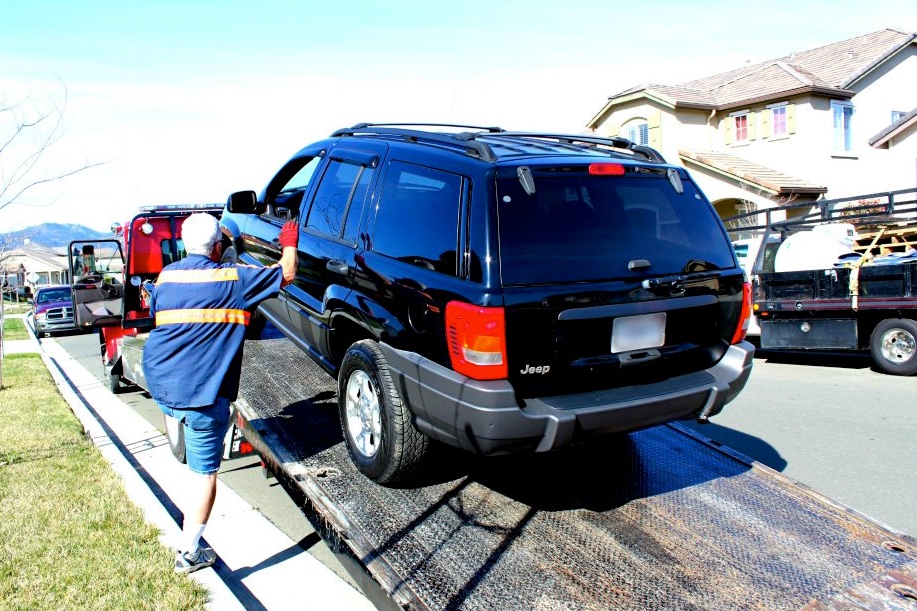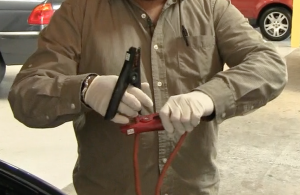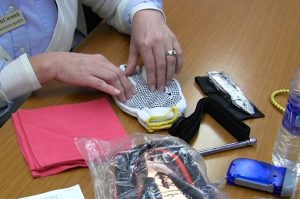
You may not be able to predict a vehicle emergency, but with proactive measures and knowledge, you can be prepared when it happens. Photo: Ramirez Tow (2016)
Nine times out of 10, driving is as simple as getting from point A to point B, but every so often, things don’t go according to plan. Whether a minor collision, a mechanical failure or a dead battery, vehicle emergencies are an inevitable part of driving, so it’s important to be prepared. To gain insight on how to do this, we’ve asked five Diamond Certified Expert Contributors to weigh in on some common scenarios.
Procedure Following a Collision
Even a minor collision can be an unnerving experience, which is why it’s helpful to have a prior working knowledge of the subsequent steps. According to Manuel Garcia of George McGill’s Body Shop, Inc., the first thing you should do after a collision is clear the scene. In addition to pulling your vehicle to the roadside, remove any traffic obstructions that could cause further accidents (as long as it’s safe to do so). You should also maximize visibility by turning on your hazard lights. If you have any cones or flares in your vehicle, use them to warn oncoming traffic of the conditions.
Once you’ve cleared the scene, the next thing to do is confirm the safety of other drivers. If anyone is injured, call 911 immediately. Do not give emergency medical assistance unless you’re trained to do so. In particular, never attempt to move an injured person unless they’re in danger; this should be left to medical professionals.
After safety has been addressed, the next step is to exchange information with the other drivers involved. This should include each driver’s contact and insurance information, as well as their vehicle license plate number. Since this can be a time-consuming task, consider this handy tip from Nana Sarkisian of Cal Auto Body: instead of writing everything down on paper, use your smartphone to take snapshots of driver’s licenses and insurance cards. Additionally, it’s a good idea to take photos of the damage sustained by each vehicle—these images can serve as documented evidence if any legal action takes place in the future.
After exchanging information, you’ll want to contact your insurance company and report the accident. Depending on the situation, you may also need to contact the police department and, if your vehicle was rendered inoperable by the collision, call for a tow. By adhering to these steps, you’ll be safer and better equipped in the event of a collision.
Jumpstarting a Dead Battery
From a blown tire to an overheating engine, there are plenty of factors that can leave your vehicle unexpectedly out of commission. Sometimes, this occurs before you even get on the road, like in the case of a dead battery. While most drivers keep jumper cables in the trunk for such an occasion, not all are familiar with the proper way to use them, which can pose a serious safety issue.

When jumpstarting a car, a good safety technique is to clamp one clip onto the opposing cable to prevent contact. Photo: Auto Techies (2016)
Snehal Shah of Auto Techies offers some helpful guidelines on how to properly (and safely) jumpstart a vehicle. Begin by connecting one end of the jumper cables to the dead battery, attaching each clip to the corresponding battery terminal (negative to negative, positive to positive). Typically, these will be denoted by a “+” or “–” symbol and color-coded: red for positive, black for negative. Next, do the same with the working battery. Remember that once the first pair of clips is connected to a battery, the opposite pair must not touch one other; since the cables are now connected to power, if these opposing clips come into contact, it will cause electrical sparks or potentially electrocution. A good safety technique is to clamp one clip onto the opposing cable, which will ensure the two clips can’t touch.
Once all the clips are connected, start the vehicle with the working battery and let it run for 30 to 60 seconds in order to charge the dead one. After this short interval, attempt to start the other vehicle (this may take a couple of tries). Once you’ve succeeded, disconnect the cables from the batteries and you’ll be on your way.
Calling for a Tow
Whether due to a collision, engine failure or a dead battery, if your vehicle is inoperable, you’ll likely need to call for a tow. Before calling, however, Steve Ramirez of Ramirez Tow says it’s important to have four pieces of information ready: the type of vehicle you have, the nature of the problem, your location and your payment method.
While this specificity of detail may seem unnecessary, Mr. Ramirez says it’s more important than most drivers realize. Factors like vehicle type and condition can influence how a dispatcher decides to handle the situation, including the type of truck and equipment they send. For example, all-wheel vehicles should only be moved using a flatbed because towing them with their wheels on the ground can be detrimental. By having all the pertinent information on hand when you call, your tow dispatcher will be able to provide the fastest and best service possible.

Having an emergency kit in your vehicle will help you be prepared for the unexpected. Photo: Toyota Marin (2016)
Assembling a Vehicle Emergency Kit
While the advent of the cellphone has made getting stranded less of an issue, the fact is, you can never be 100 percent sure it won’t happen—especially when traveling long distances through unfamiliar terrain. To make sure you’re covered in such a situation, Paula McCormick of Toyota Marin recommends keeping an all-purpose emergency kit in your vehicle.
A vehicle emergency kit should consist of items that address a variety of needs. For example, in addition to standard roadside emergency tools like a tire jack and jumper cables, it’s a good idea to keep supplies on hand for making temporary repairs. Some of these items may include bungee cords and tether straps for fastening needs, electrical tape for adhesive needs, and a pair of gloves to protect your hands. In a nighttime emergency, a mechanically powered flashlight (such as a “hand crank” or “shake” model) and roadside flashers will help provide visibility. Additionally, if you have to spend a night in your car, you’ll be glad to have a blanket, as well as some water bottles and snacks.
While you’ll hopefully never need it, a vehicle emergency kit will be a critical asset in the event that you do. You can assemble your own emergency kit or purchase a pre-packaged one at your local dealership or auto parts store.
